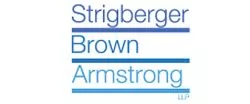On December 31, 2013, the plaintiff, Kathryn Owens, had a slip and fall outside the Blue Canoe Waterfront Restaurant (the "Restaurant"), in Stevenson, BC, while walking on the boardwalk adjacent to its entrance. She shattered her right patella in the fall. The actual entrance is concrete which extends from the street. Abutting the concrete is a wooden plank ramp which leads to the boardwalk, which is also composed of wooden planks.
Subsequent to her fall, the plaintiff brought an action against a number of parties. All actions were discontinued but for the action against the Restaurant.
The trial took place in January 2019 before The Honourable Madam Justice Maisonville, whose judgment, in favour of the plaintiff, was released on May 14, 2019.
The main issue in this case was whether the defendant failed to meet the standard of care owed to the plaintiff, under the Occupiers Liability Act ("OLA") and whether, but for that breach, the accident would not have occurred.
The Trial Evidence
The plaintiff and her husband went to the Restaurant for a light meal before going home to celebrate New Year's Eve. They frequented the Restaurant fairly regularly but mostly during the summer months. After their meal they decided to look at the boats in the harbour. Neither were feeling the effects of alcohol when they left the Restaurant.
The couple exited the restaurant onto a concrete path walkway at the door. To get to the boardwalk, they were required to descend a wooden ramp. The plaintiff was following her husband. She looked at the ramp before stepping onto it. It appeared to be dry. After safely descending the ramp, the plaintiff stepped onto the boardwalk, took one, two, or three to four steps, then fell forward onto her right knee.
After she fell, the plaintiff noticed that the wood was wet where she was lying as her clothing on the right side was soaking wet.
The plaintiff had not seen any signs on the boardwalk and testified, at trial, that had there been a sign, she would have grabbed her husband's arm or taken a different way down to see the boats. The plaintiff was vigorously cross-examined, at trial, on whether she had noticed that the boardwalk was wet. The plaintiff was adamant that had she seen it was wet, she would not have gone down the ramp.
There were no warning signs at the ramp leading to the boardwalk; however, there were a number of places, in other areas on the boardwalk, that had warning signs and grates on it to make it safe. In fact, on the neighbouring property was a sign that stated: 'CAUTION. BOARDWALK MAY BE SLIPPERY DUE TO VARIABLE WEATHER."
The witness for the defendant had never heard of any safety issues around the Restaurant. He testified that thousands of people come through the area and it was very busy in the summertime. He had never had any complaints about the surface of the ramp being slippery. He did admit that there are times, mainly during the winter, when the surface of the ramp could be slippery, mostly when there was frost (there was no frost on the date of loss). At the time of the trial, the Restaurant still had not erected any signs, applied any abrasive paints, put down sandwich board signs or metal grates on the walkway, or made any changes to address the potential slipperiness of the ramp or the boardwalk.
The Law
According to the OLA, the Restaurant was required to ensure that the plaintiff would be reasonably safe while using the boardwalk. The issue, for the court, was whether or not the Restaurant breached that duty and, if so, whether, but for the breach, the incident and damages flowing from it, would not have occurred.
As the court noted, the Restaurant was not expected to achieve "perfection" – the standard is "reasonableness". In considering whether or not the Restaurant met this standard, four factors were considered:
- Whether there was a recognizable risk of injury;
- The gravity of the risk;
- The ease or difficulty with which the risk could be avoided; and
- The burden or cost of eliminating the risk.
In addition to establishing a breach of the standard of care, the court confirmed that the plaintiff must prove that the Restaurant "caused" the incident or "but for the defendant's actions, the incident would not have happened."
Analysis
Breach of the Standard of Care
The court held that the Restaurant had not met the standard of care imposed by the OLA, based on the following trial evidence.
Although the plaintiff's evidence on how she came to fall was "imprecise", the court found that it was more likely than not that she fell on the boardwalk because it was wet. Although there were no witnesses to the fall, the court found the plaintiff's evidence to be credible and her description of what occurred leading up to and after the fall to be reliable. The court accepted her evidence that neither the wooden planks of the boardwalk nor of the ramp appeared to be wet from a visual scan, but that she noticed the boardwalk was wet while lying on its surface after her fall.
The court also accepted that the plaintiff had looked at the boardwalk before she walked and was unaware that the wood was wet or that the planks may have been slippery.
The Restaurant argued that, regardless of whether the boardwalk was wet, its duty was not to achieve perfection and the fact that the boardwalk was wet did not constitute an unreasonable risk of harm.
The court held that the Restaurant had a positive duty to take reasonable care to make sure the boardwalk was safe to be walked on. An important factor, for the court, in determining that this duty had not been met was that other occupiers along the neighbouring boardwalks had mounted signs warning of the potential slipping hazard. This persuaded the court that the boardwalk could be slippery when wet and that this wetness would not always be visually noticeable to visitors. This fact, amounted to a recognizable risk that required some positive action on the part of the Restaurant: "a sign should have been erected at the top of the ramp to warn that it could be slippery given the variable weather conditions at the site."
Another factor the court clearly found relevant was that the costs of reducing the risk of slipperiness would have been minimal and held that the Restaurant breached its duty under the OLA to the plaintiff in failing to take any steps to reduce or eliminate the risk posed by the boardwalk becoming slippery when wet.
The court accepted the plaintiff's evidence that had there been a sign warning that the ramp and the boardwalk surfaces could be slippery, she would not have gone down the ramp that day and her evidence that "If there had been a sign, I either would have grabbed Rodger's arm to go down the ramp or we would have turned and gone a different direction."
Causation
To be successful against the Restaurant, the plaintiff also had to prove "but for" the Restaurant's actions, the accident would not have happened. Or, put another way, the plaintiff must prove that the Restaurant's failure to warn of the potential slipping hazard caused her fall.
The Restaurant argued that a sign would have made no difference and, therefore, the plaintiff had not proven causation. The court rejected this argument as the question to be answered is whether a sign would have changed the plaintiff's behaviour and, thus, prevented her fall? The court accepted the plaintiff's evidence that she had looked for such a sign and other indicators of the safety of taking the ramp, including checking for whether it was wet. As the court found the plaintiff to be a credible and reliable witness, it accepted that the presence of a sign would have dissuaded her from taking the ramp or prompted her to take additional precautions.
The breach of duty, of the Restaurant, was its failure to put up a caution sign and had such a sign been visible to the plaintiff, this accident would not have occurred.
Take Away
This case is a reminder that occupiers are required to take positive steps to ensure that visitors are safe while on their premises. A few factors that likely affected the court's finding include the presence of warning signs on other areas on the boardwalk and the cost of erecting such a sign would have been minimal. It certainly did not help the Restaurant's case that the trial evidence was that it was known that the surface of the ramp could become slippery during the winter and that, at the time of trial, no warning sign had been erected. Lastly, even though there were no witnesses to the fall the court made it clear that the plaintiff was credible and, as a result, was able to prove her case through her evidence, alone, a reminder that credibility is always key.
See Owens v Steveston Harbour Authority et al, 2019 SCBC 746 (CanLII)
The content of this article is intended to provide a general guide to the subject matter. Specialist advice should be sought about your specific circumstances.

